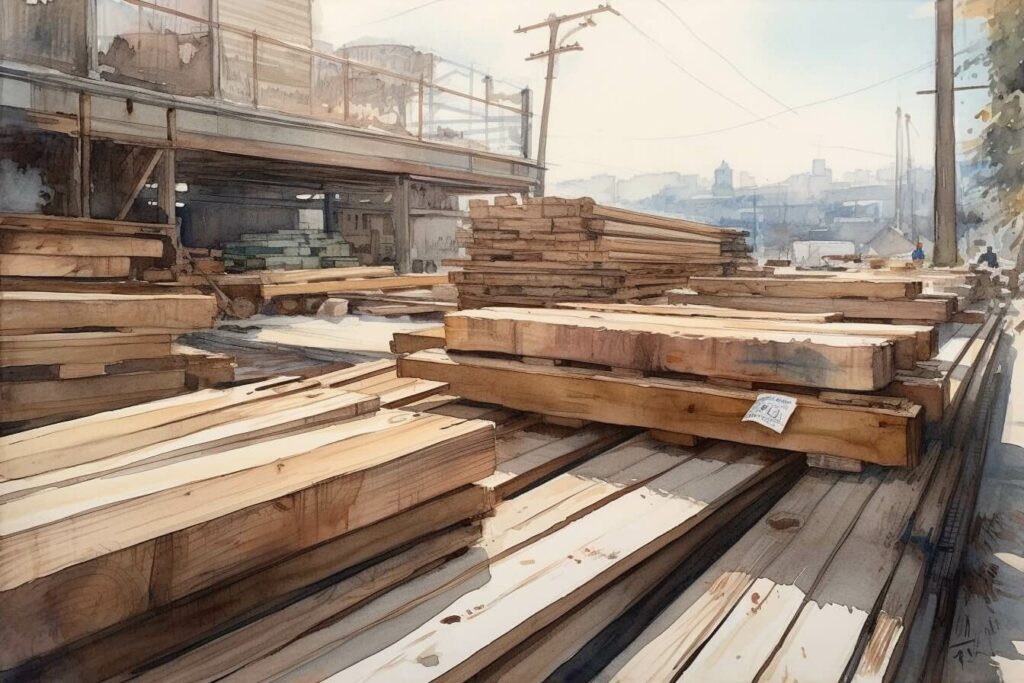



A 2-day immersion into the future of sustainable construction
Sustainable building materials are becoming increasingly popular as the construction industry moves towards more eco-friendly practices. The right materials can significantly reduce a building’s environmental impact and improve overall sustainability.
This article will discuss the importance of sustainable materials and explore 10 innovative options that can help create greener buildings.
The Importance of Sustainable Building Materials
Environmental Impact
As global temperatures continue to rise and the effects of climate change become more pronounced, adopting more sustainable construction practices is essential.
Sustainable building materials can significantly impact the environment, from the resources required to produce them to the energy needed for transportation and installation. Sustainable materials help minimize these impacts, making it easier for builders to create eco-friendly structures.
Cost-Effectiveness
Sustainable building materials can also be more cost-effective in the long run. They often require less maintenance and have longer lifespans, which can result in lower overall costs for building owners. Additionally, many sustainable materials are available at competitive prices, making them an appealing choice for budget-conscious builders.
Durability
Sustainable materials are often more durable than their traditional counterparts, which can extend the lifespan of a building and reduce the need for frequent repairs or replacements. This contributes to the overall sustainability of a structure and can save both time and money.
Top 10 Sustainable Building Materials


Sustainable Building Materials #1: Reclaimed Wood
Reclaimed wood is lumber salvaged from old buildings, barns, or other structures. It’s a fantastic way to reduce waste and give beautiful, aged wood new life. Reclaimed wood is strong, durable, and can be used for various purposes, including structural support, flooring, and furniture.


Sustainable Building Materials #2: Bamboo
Bamboo is a fast-growing, renewable resource that can be used as an alternative to hardwood. It’s lightweight, strong, and versatile, making it an excellent material for flooring, cabinetry, and even structural support. Bamboo’s rapid growth means it can be harvested without contributing to deforestation.
Sustainable Building Materials #3: Recycled Metal
Recycled metals, such as steel and aluminum, can be used in construction projects to reduce waste and the need for new raw materials. These metals are incredibly durable and can be melted down and reshaped multiple times without losing structural integrity. Using recycled metal also helps decrease greenhouse gas emissions associated with mining and processing new materials.
Sustainable Building Materials #4: Straw Bales
Straw bales are a low-cost, renewable resource that can insulate walls in eco-friendly buildings. They provide excellent insulation, regulate indoor temperatures, and reduce energy consumption for heating and cooling. Straw bale construction is known for its natural resistance to fire, pests, and mold.
Sustainable Building Materials #5: Rammed Earth
Rammed earth is a time-tested building technique that involves compacting a mixture of soil, clay, and natural fibers between sturdy forms. The resulting walls are solid, energy-efficient, and have a low environmental impact. Rammed earth structures, as one of the sustainable materials, are also known for their excellent thermal mass, which helps regulate indoor temperatures and reduce energy consumption.
Sustainable Building Materials #6: Insulated Concrete Forms (ICFs)
ICFs are a type of sustainable building material made from expanded polystyrene foam. They are lightweight, easy to install, and provide excellent insulation. ICFs can be used to build energy-efficient walls, foundations, and floors, reducing energy consumption and lowering overall construction costs.
Sustainable Building Materials #7: Mycelium
Mycelium is the root-like structure of fungi that can be used as a sustainable building material. It’s lightweight, renewable, and biodegradable, making it an excellent eco-friendly alternative to traditional insulation materials. Mycelium also has natural fire-resistant and pest-resistant properties, which can help improve the overall safety of a building.
Sustainable Building Materials #8: Ferrock
Ferrock is a sustainable alternative to traditional concrete made from steel dust, silica, and other waste materials. This innovative material is not only eco-friendly, but it’s also stronger and more durable than traditional concrete. Additionally, Ferrock is carbon-negative, meaning it actively absorbs and locks away CO2 as it hardens.
Sustainable Building Materials #9: Hempcrete
Hempcrete is a bio-composite material made from the woody core of the hemp plant and a lime-based binder. It’s lightweight, durable, and has excellent thermal insulation properties. Hempcrete is also resistant to pests, mold, and fire, making it an attractive option for sustainable construction projects.


Sustainable Building Materials #10: Recycled Plastic
Recycled plastic can be used in various ways in sustainable construction, from creating durable building materials to insulating walls and roofs. It helps reduce waste and keeps plastic from landfills while offering a cost-effective and eco-friendly alternative to traditional materials.
Conclusion
Sustainable building materials are an essential part of the future of construction. With increasing concerns about climate change and the environment, these innovative materials offer an excellent opportunity for builders to reduce their environmental impact while creating beautiful, energy-efficient structures. By incorporating sustainable materials like reclaimed wood, bamboo, and recycled metal into construction projects, we can build a greener future for future generations.
FAQs
What is the most sustainable building material?
There isn’t a single “most sustainable” material, as different materials offer various benefits depending on the application. Location, climate, and intended use should be considered when choosing the best sustainable material for a specific project.
Are sustainable building materials more expensive?
While some sustainable materials may have a higher initial cost, they can be more cost-effective in the long run due to lower maintenance needs, increased durability, and energy savings.
Can sustainable materials be used in any construction project?
Many sustainable materials are versatile and can be used in various construction projects, from residential homes to commercial buildings. However, it’s essential to consider factors like local building codes, climate, and the specific requirements of a project when selecting the most appropriate sustainable materials.
How do sustainable building materials contribute to energy efficiency?
Sustainable materials often have excellent insulation properties, which can help regulate indoor temperatures and reduce energy consumption for heating and cooling. Additionally, they may contribute to a building’s overall thermal mass, further improving energy efficiency.
Where can I source sustainable materials?
Many suppliers specialize in providing sustainable materials. Researching and choosing a reputable supplier that offers high-quality, eco-friendly materials is essential. Local sourcing can also help reduce transportation-related emissions and support local businesses.
What are some other benefits of using sustainable building materials?
In addition to their environmental and energy-saving advantages, sustainable materials can contribute to improved indoor air quality, a healthier living environment, and increased property value. They may also qualify for green building certifications, such as LEED, which can enhance a building’s marketability.
Can traditional building materials be combined with sustainable materials?
Yes, sustainable materials can be used in conjunction with traditional materials. Integrating sustainable materials into a construction project can help improve the overall environmental impact while maintaining the desired aesthetic and structural integrity.
How can I incorporate sustainable building materials into an existing building?
Sustainable materials can be used in renovation and retrofit projects to improve an existing structure’s energy efficiency and sustainability. Examples include adding insulation made from recycled materials, installing reclaimed wood flooring, or replacing windows with energy-efficient options.
Are there any disadvantages to using sustainable materials?
While sustainable materials offer numerous benefits, some drawbacks may depend on the specific material and application. For example, some materials may have a higher initial cost, limited availability, or require specialized installation techniques. It’s essential to thoroughly research each material and consider potential drawbacks before deciding which sustainable options suit a project.
How can I learn more about sustainable building materials and practices?
Many resources are available for learning about sustainable materials and construction practices. Some options include online articles, books, courses, and workshops. Additionally, you can consult with professionals in the field, such as architects and contractors specializing in sustainable design, to gain further insight and advice.






A 2-day immersion into the future of sustainable construction
If you need our services in the Portuguese language, click here.

